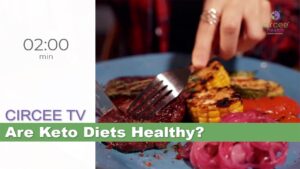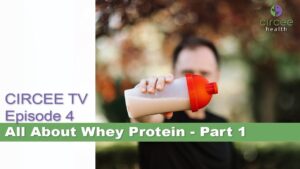Bones. Yes, you read it right. We taste from our bones. Why just bones, what if I told you that we taste not just with our tongue, but from many other organs.
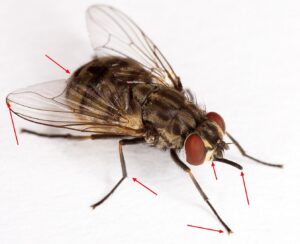
Do you recall learning about flies and how they can taste from various parts of their bodies? As a refresher, here is a fly with all its taste bud location marked. So why would we think that only insects have this ability? Over the years, we have found taste bud receptors on various animals located not just in the place of where they eat, but pretty much everywhere. So now you must be asking, why is this important. Aha! Suppose you eat something that is sweet, yet has no calories (you know where I am going with this, right).
Let’s take the example of diet soda. Studies are divided on this one where even thinking about the sweets can cause an insulin response. However, what is not controversial, is that various other sweet receptors in our body produces insulin after drinking an artificial sweetener!
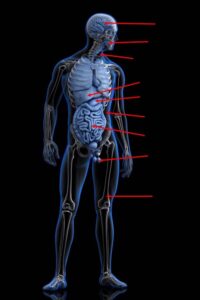
So where are these taste receptors? Here is a digram on the right that represents some of the taste receptors found so far. You already know about the tongue, but look at the others! Surprised? Especially the fact that roughly half of us have “extra” taste receptors? By now you must be wondering, “so what?”. There are several problems that this causes such as the “taste buds” in the intestine, land up altering our good bacteria. But the most important problem is when these sweeteners hit our bones “taste buds”.
Bones as you might recall from biology, has bone marrow and some of this marrow continues to produce new cells for our body using specialized cells called stem cells (in this case, they are the mesenchymal stem cells). Normally, these cells produce all kinds of cells for the body, from red cells, brain cells, cartilage, tendons, bone cells, fat cells, etc.
This is a simplification of course, but in the presence of sweeteners, these stem cells start producing fewer bone cells and more fat cells.
The diagram below shows what happens normally when stem cells create bone and fat cells.
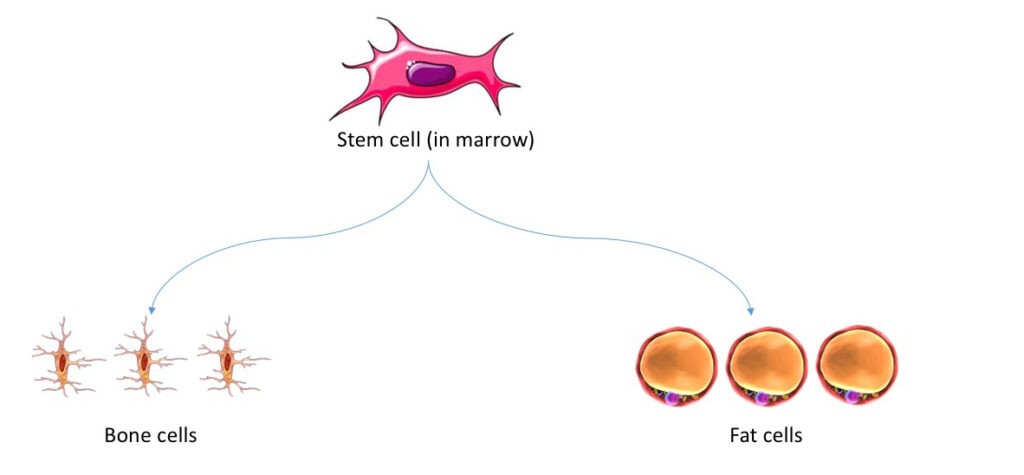
The diagram below illustrates what happens when the bone marrow “tastes” sweeteners. It starts diverting production of bone cells more towards production of fat cells. Fewer bone cells leading to brittle bones as seen in an Irish study (referenced below) and increase in the number of fat cells, and course leads to fat accumulation and obesity.
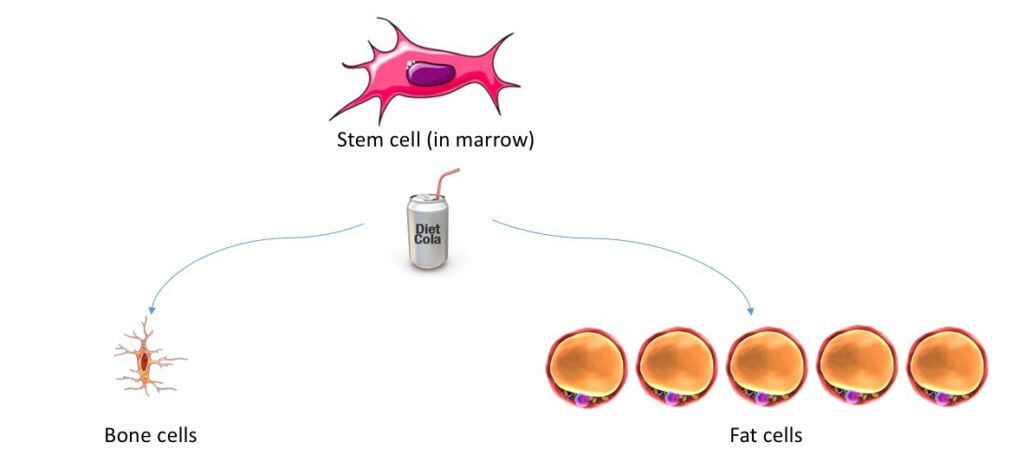
Problems don’t just stop at brittle bones and obesity. A recent Swedish study has found a correlation between higher consumption of artificial sweeteners and earlier puberty and premature deliveries.
If all the above has not convinced you about sweeteners, then here is a study that mapped the relative risk of having artificially sweetened drinks on the probability of getting diabetes and/or cancer. Please note that negative numbers show that there is no risk. What I find shocking is that taking a reasonable amount of sugar in your tea/coffee decreases your risk of getting diabetes and/or cancer. This of course, is if all other factors (such as diet, exercise, lifestyle, etc.) are the same.
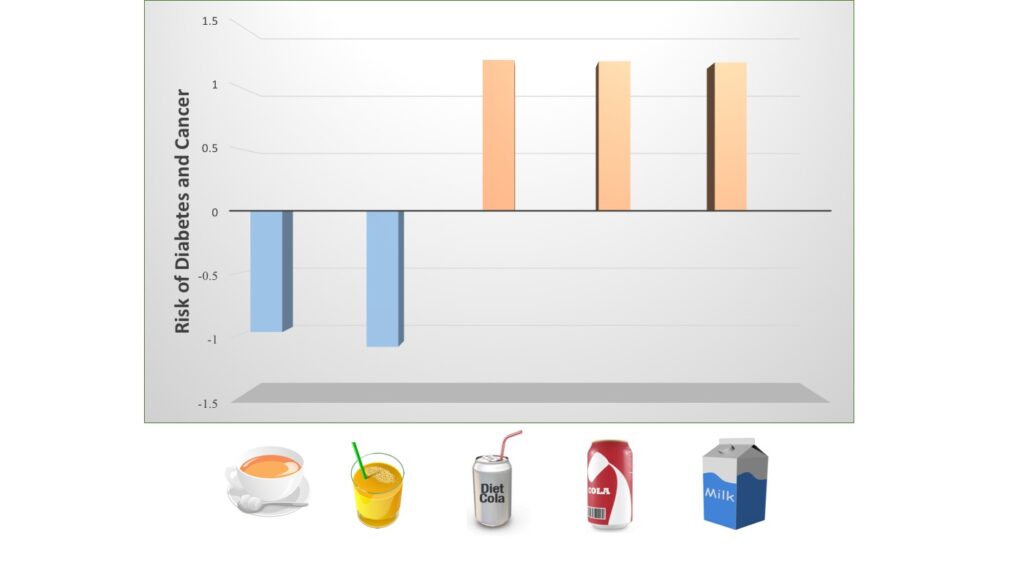
Unfortunately, it does not stop there. Recently researchers analyzed data from a study of about 2,000 individuals dietary habits and concluded that there is a correlation between high diet soda intake and fatty liver. From the sound of it, the disease does not seem very bad, but I can tell you from personal experience that I have had three very dear relatives succumb to this disease! Our job on this site is to make you, the reader aware of the risks of various behaviors, it is up to you to take action and incorporating what you think you’ve learned from the posts here.
Science Says
The consumption of soft drinks, sweetened-milk beverages and energy from total sweet beverages was associated with higher type 2 diabetes risk independently of adiposity. Water or unsweetened tea/coffee appear to be suitable alternatives to sugar sweetened beverages for diabetes prevention. These findings support the implementation of population-based interventions to reduce sugar sweetened beverages consumption and increase the consumption of suitable alternatives.
References
- The cephalic phase insulin response to nutritive and low-calorie sweeteners in solid and beverage form.
- Ingestion of diet soda before a glucose load augments glucagon-like peptide-1 secretion
- Stomach’s Sweet Tooth: Turns out taste is not just for the tongue
- Artificial Sweeteners Stimulate Adipogenesis and Suppress Lipolysis Independently of Sweet Taste Receptors
- Sucralose, a synthetic organochlorine sweetener: overview of biological issues.
